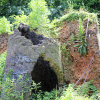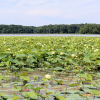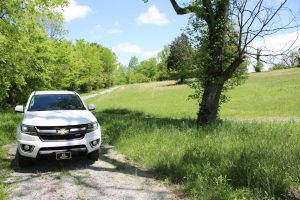
We recently visited the site of Cerulean Springs in Trigg County, Kentucky. The natural phenomena of the spring’s color and the history surrounding it are quite interesting.
The location of the spring isn’t marked real well and it took a few minutes to find it. Down a small gravel lane, up and over a hill, the spring is located in a basement-like structure near a creek.
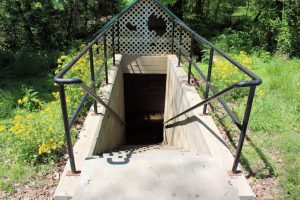
The stairs lead down to a tiny room full of mud. In the center of the room is the spring, trickling no more than a typical water hose. But the interesting thing is the water is sky-blue, hence the name “Cerulean”.
To me is resembles water-down milk but with a blue tint. I didn’t dare try to sample the water. The room was muddy, the water looked gross, and not to mention it was the residence of a fairly large bullfrog.
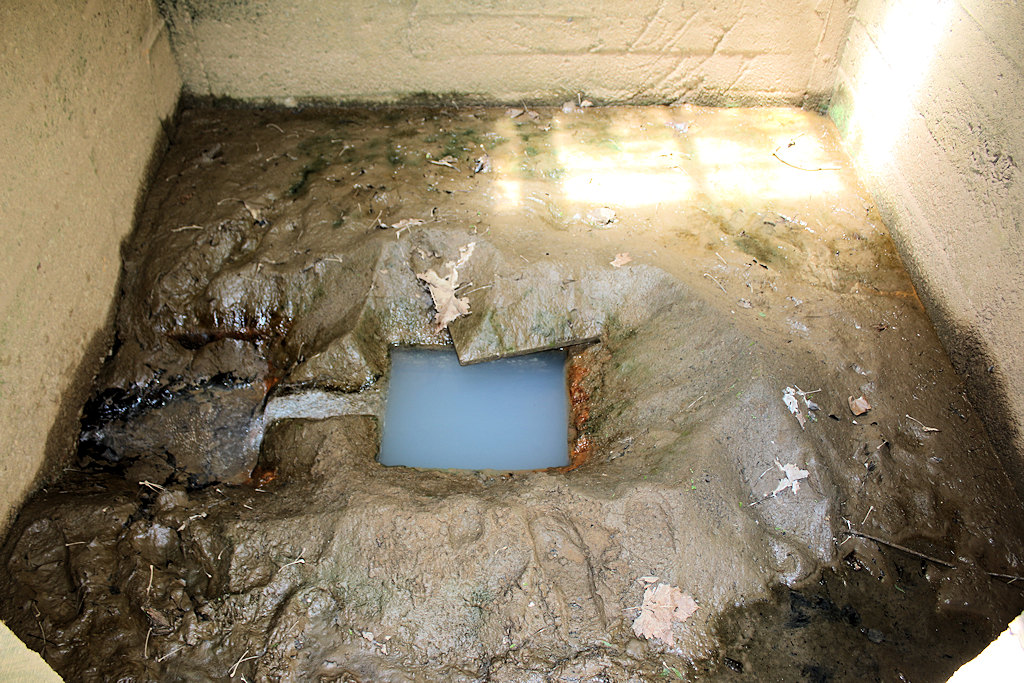
The history of this spring is equally fascinating as the color the spring. A resort sprung up at this location around 1817 and gained significant popularity throughout the south. In the late 1800s, people from all over the region would come by train (there was a station nearby) to sample the mineral spring, which was believed to have healing effects on the body.
Throughout history, this site featured several different variations of accommodations and entertainment options, including a skating rink, bowling alley, hotel ballroom and dancing pavilion.
Cerulean Springs Timeline
Here is a timeline of the hotel and resort, according to the historical marker at the site:
- 1806 – On July 7, the springs land survey for Jesse Goodwin (1760-1848) was made.
- 1811 – New Madrid Earthquake sank the black sulfur spring and in its place a spring of blue sulfur water broke through into Muddy Fork Creek.
- 1817 – Kinchen Killebrew (1757-1839) bought the spring and the surrounding 60 acres. He opened a health resort of cabins for visitors. This marks the beginning of development around the spring.
- 1835 – The spring and surrounding 300 acres were sold to Col. Philemon H. Anderson (1787-1866) for $2,250.
- 1865 – The property was sold to C. H. Anderson in 1865 for $9,000.
- 1868 – John. W. Hicks bought the hotel and 50 acres for $2,000.
- 1869 – The hotel burned, but a new hotel was constructed featuring two stories and 22 rooms.
- 1879 – J.T. Harper installed a ram and subterranean pipe to supply spring water to hotel guests. A “ten pin alley” (bowling) and ballroom were constructed.
- 1888 – S.W. Gunn and Company bought the hotel for $15,000.
- 1894 – The hotel was sold to John W. Stith for $12,000
- 1899 – The hotel sold to Sam Boyd for $7,500, then was sold to Capt. R.S. “Dick” Pool and 131 acres for $8,000.
- 1901 – A three-story frame hotel annex was built, featuring 50 rooms and 760 feet of porches.
- 1903 – Cerulean Springs Hotel Co. Inc. bought by T.O. Turner for $10,000.
- 1904 – Hotel ballroom, bowling alley, barbershop and bathrooms burned.
- 1905 – A dancing pavilion was constructed.
- 1907 – A skating rink was constructed.
- 1918 – Hotel property and 40 acres were sold to Bessie Murchie for $5,000.
- 1924 – G.A. Hankley bought the hotel at a public auction for $10,000.
- 1925 – On August 29, the Cerulean Springs Hotel burned at sundown.
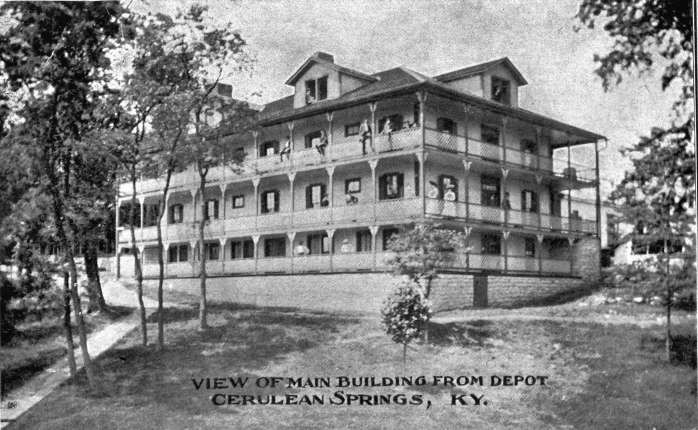
The town of Cerulean Springs was established with the arrival of the post office in 1824. We will have more on the town in a later post on Four Rivers Explorer.
Location of Cerulean Springs
Here is the exact location of the spring (36.9653697, -87.7122247):
References
- westernkentuckyhistory.org
- Kentucky Place Names


